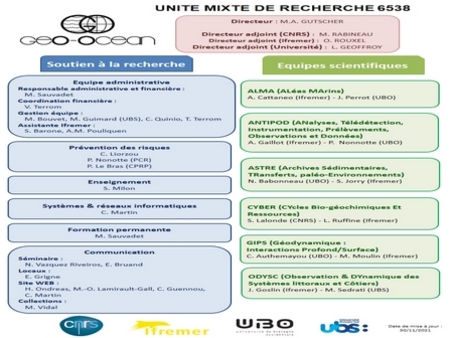The impacts of seabed mineral extraction
Exploitation of the seabed, whatever the purpose or precautions taken, results in temporary or permanent modifications of the marine environment. The global marine ecosystem is complex and the interdependence of the liquid, solid, and living mediums is such that the modification of one of these elements can lead to an irreversible evolution of the environment.
Damage to the liquid environment
Water is the first medium affected by turbidity caused by aggregate extraction:
- At depth due to the discharge hose* passing over the seabed
- Surface release of fine particles with water from the overflow
Even at low levels, turbidity should not be overlooked as its effects on benthic flora and fauna can be significant.
The fine particles form a plume which, driven by currents, will settle either at sea or on the coast. The risk of re-suspension of contaminated fine particulates is insignificant or even non-existent since the sediments for extraction (sand and gravel) were deposited before the industrial era.
*Discharge hose: Pipe drawing sediment from the bottom to the ship’s hold.
Damage to the solid environment
Extraction inevitably leads to changes in seabed morphology (see figure) which may in turn alter the bottom current regime in the vicinity of the extraction site.
By altering the balance of surficial sediments, in which coastal sands may be mingled, these extractions may cause or exacerbate coastal erosion, particularly in the case of near-shore operations in shallow water. Excavations can also make these areas temporarily unsuitable for trawling.
Damage to the living environment
The effects of extraction on biological resources are either immediate and therefore obvious, or long-term and only careful monitoring makes it possible to measure the gravity of its effects.
One of the immediate repercussions is the undeniable destruction of the benthic population** in the exploitation zone. This mainly affects invertebrates that can be directly exploited by humans or are sources of food for certain fish. There is also the risk of destroying spawning grounds for species that lay their eggs on the bottom (herring in the Eastern Channel and the North Sea), which are of great commercial interest, and nurseries where young individuals are concentrated.
Longer-term impacts are less easy to identify, as they are difficult to differentiate with certainty from natural seasonal or annual variations. In the case of extensive exploitation, significant changes in the distribution of different substrates will alter the relationships with their associated communities. In particular, digging through fine sediment deposits to reach underlying gravels leaves lasting traces, and the most productive communities are found in these fine sediments. The sedimentation of fine particles, re-suspended during dredging and concentrated by bottom currents, can also change the nature of the substrate.
** Living on the seabed
Extraction of marine materials is generally made through trailer suction dredging. When the sling's beak penetrates the subsoil, it leaves a more or less visible and lasting trace on the bottom, depending on the nature of the sediment. The impact of old mining operations has been revealed by side-scan sonar in coarse sediments (gravels and pebbles); the marks remain visible for several years after the end of the activity. These marks are evidence of the low mobility of this type of sediment, which does not allow for the rapid filling of furrows. In sandy areas, on the other hand, the traces of extraction are more easily erased.

